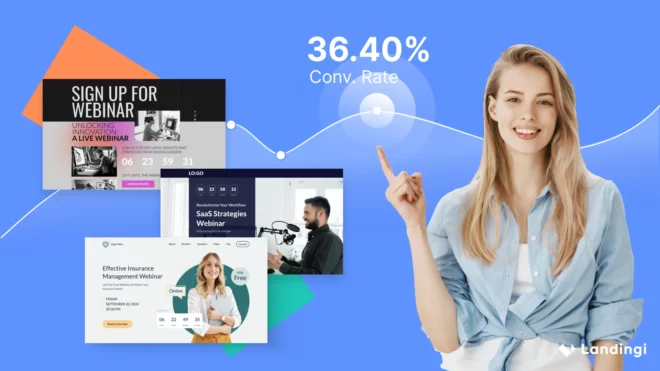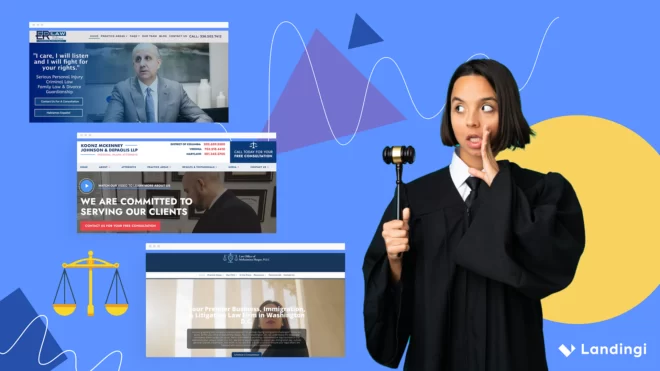Insurance companies promote their services in multiple ways: organically and by using paid ads, both in Google and on social media. No matter what the acquisition channel, it’s important to make marketing creations effective in getting new leads and customers.
Compared to traditional websites, landing pages make more sense in promotional activities. They are made for a particular goal, keeping visitors more engaged and more likely to convert than a homepage with distracting links and offers. That way, landing pages help you build a contact base, which is essential for email marketing activities.
As a result, using landing pages in digital campaigns is a no-brainer for insurance companies. Let’s go into the details of insurance landing pages, including best practices, examples, why they work, and how you can use them for inspiration. These tips will help you create your own landing page and convert visitors into customers.
Make your sections smartable and let go of mundane manual tasks with Smart Sections! An easy way to manage bulk changes.
Best Practices for Insurance Landing Pages
Not all insurance landing pages are equally effective. Some manage to convince more visitors than others. A lot depends on the specifics of your offer, but there are other things you can do, too. Let’s look at some of the best practices for the insurance business that will help you create a high-converting landing page.
Use Funnels in Questionnaires
Most insurance companies use landing pages to generate a tailor-made quote for the visitor. Without all the necessary information, it might be impossible to make that happen, and there are lots of fields the visitor needs to complete to get the quote.
That’s why it’s effective to divide the form into smaller parts. The first part can contain only the primary piece of information, such as the zip code for home insurance. The other parts of the questionnaire can go more in-depth.
This gives the visitor a feeling it doesn’t take that much time to complete the form at once. Once they are in the later stages of the questionnaire, they are less likely to abandon it since they have invested time already.
Focus on Easily Achievable Goals
A homepage is where visitors find lots of information about your insurance business, but a landing page is where they take action. It’s vital for insurance landing pages to have engaging goals and don’t require extensive commitment.
One of the most popular goals is getting a free quote. It doesn’t require any upfront payment from visitors and they are free to keep searching for other deals. Furthermore, it’s a quick process, resulting in high conversion rates.
Create a Landing Page for Every Insurance Type
Each type of insurance is different, so your landing pages should reflect that. That way, you can adjust each page to the specifics of your offer and measure which one earns the best results.
Depending on the insurance, your potential clients might be persuaded by varying points. Not to mention the fact that if you use landing pages in paid ads, you can match them to particular campaigns and keywords rather than use one page for all kinds of insurance.
Originality is essential in landing pages, but staying on top of the competition and getting inspired by what others have done right is ingrained in the creation process.
Let’s take a look at 11 insurance landing page examples and dissect them. The examples are divided into four main categories to drive the last best practice home.
Insurance Landing Page Examples
Auto Insurance
1. Credit Karma
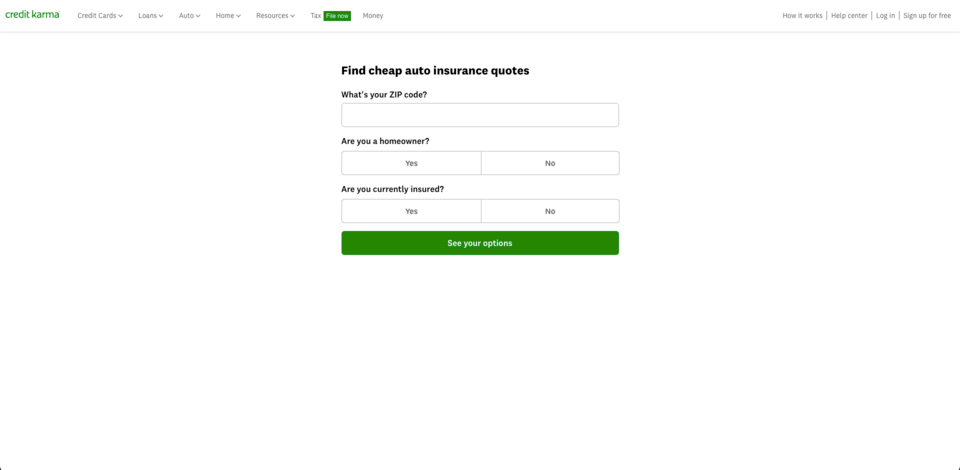
Credit Karma’s landing page is clear in what it wants visitors to do. This auto insurance landing page is simple, both in design and content. Simplicity is admirable, but this example might just be a victim of a “too much of a good thing” mentality.
- The form only requires a ZIP code and answering two yes/no questions. From the UX standpoint, it’s a solid choice.
- The landing page is bland in terms of colors. An all-white background with a header, a form, and nothing else except for the footer.
- Speaking of the footer, it takes up too much space. It shouldn’t be on a landing page in the first place, but if it has to be there, it would be wise to make it smaller.
2. Progressive
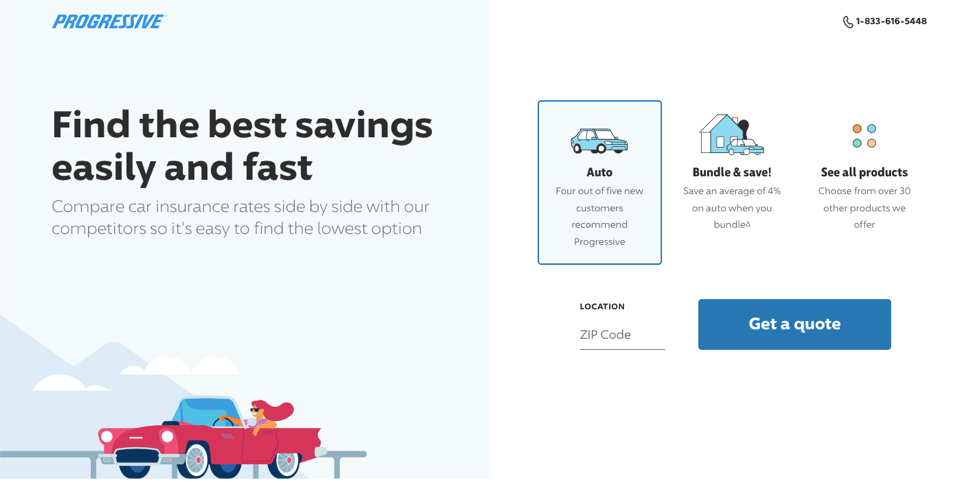
Progressive’s landing page has a clear goal of getting a quote for auto insurance. The form is the clear star here, and the rest of the page plays a supporting role.
- The form asks for a ZIP code and a type of insurance, with optional additional buttons.
- The use of tabs that correspond to different parts of the copy is a good solution for saving space.
- The copy is related to auto insurance, so there will be no confusion here.
- The background is mostly white and boring. However, the colors work well together. There is enough contrast to make the copy legible.
- The “#1 Insurance Website” section takes too much space and offers little helpful information.
3. Liberty Mutual
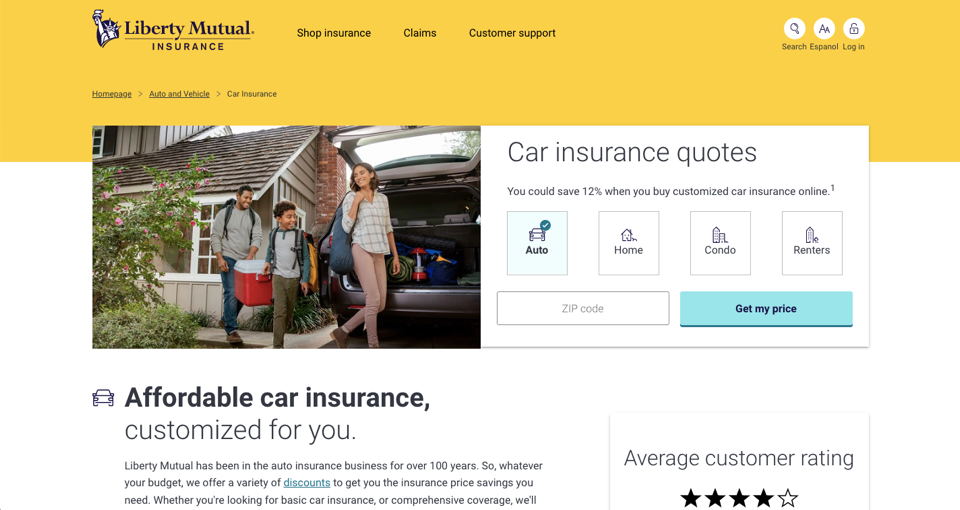
The page promoting Liberty Mutual’s car insurance starts like a landing page, but the more you scroll, the more of a typical product page it becomes.
- The hero section of this landing page example is well done. A short and enticing header, a fitting image, and a quick form to fill out.
- Subsequent sections contain lots of links that redirect to other pages in the same domain.
- The sections themselves are informative and written succinctly, but some could be removed to save space.
- The addition of recent testimonials is a solid choice, but they lack real names, which reduces their credibility.
Health Insurance
4. Bupa Private Client
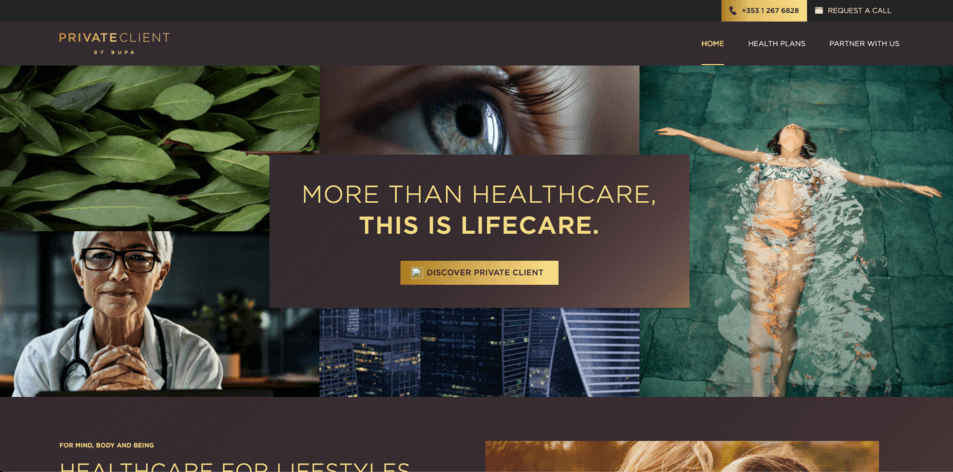
This particular healthcare landing page made by Bupa Private Services has a well-defined target group and messaging. It targets people who expect a full suite of health-related services and the copy has a luxurious angle to it.
- Design-wise, it attempts to evoke feelings of luxury and exclusivity. The colors of gold and brown, the images, the animations – all of that create an opulent composition.
- The template isn’t too complicated, making it easy to follow.
- The entire page focuses on its goal, with a handful of links taking visitors elsewhere.
- The contact form is too long for the goal of getting a callback. If someone is interested in the service, they can discuss all the required information over the phone. Asking for it upfront might discourage visitors from filling it out.
5. Axa
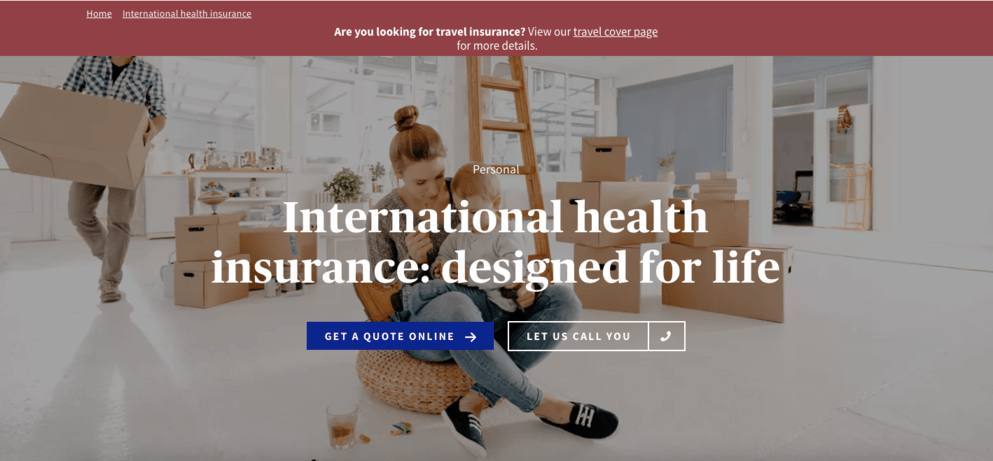
The health insurance landing page made by Axa Global Healthcare is comprehensive, and it contains sections that help visitors get the full picture of the offer. Some of the notable elements include:
- A detailed table with a comparison of cover levels
- An explainer of the steps from the landing page to getting coverage
- A drop-down FAQ section
- Additional, tailor-made options are presented neatly
- Customer rating
A few parts of the page might be distracting, and some links should be removed for that very reason. Overall, though, it’s a solid landing page.
6. Allianz Care
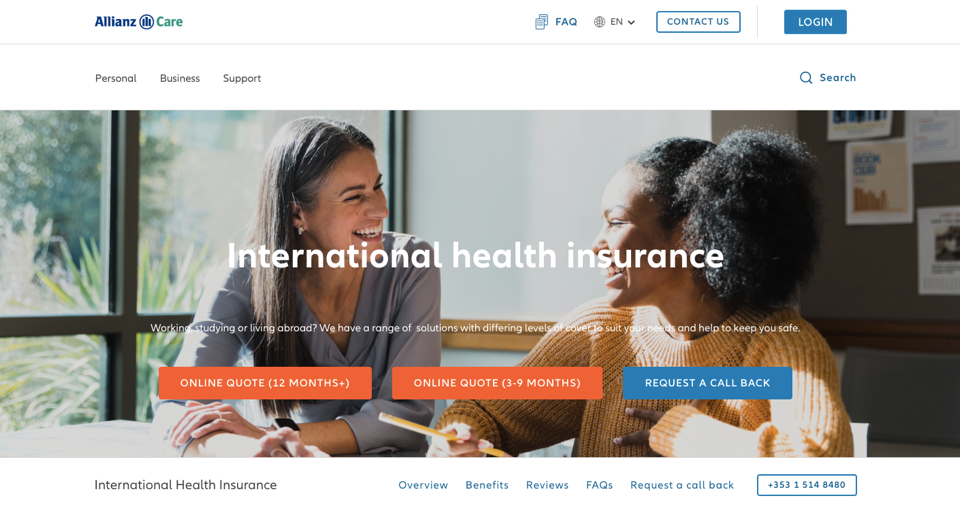
Just like the example above, the Allianz landing page features a lot of useful information. In fact, there are a few similarities between Axa and Allianz, but the latter is more in-depth.
- There are links in the top bar that improve navigation on the page by scrolling down to the chosen section.
- A list of costs of common occurrences in various countries shows how much visitors can save by choosing an international insurance plan.
- The “Why Allianz Care” section showcases the unique benefits of the business.
- A great example of social proof: recent testimonials with names and star ratings.
- The landing page design includes a few images; the focus is on the copy instead.
The great aspect of this landing page is it allows visitors to learn about the offer and get a quote quickly. The informational approach can help increase the conversion rate.
Travel Insurance
7. Global Rescue
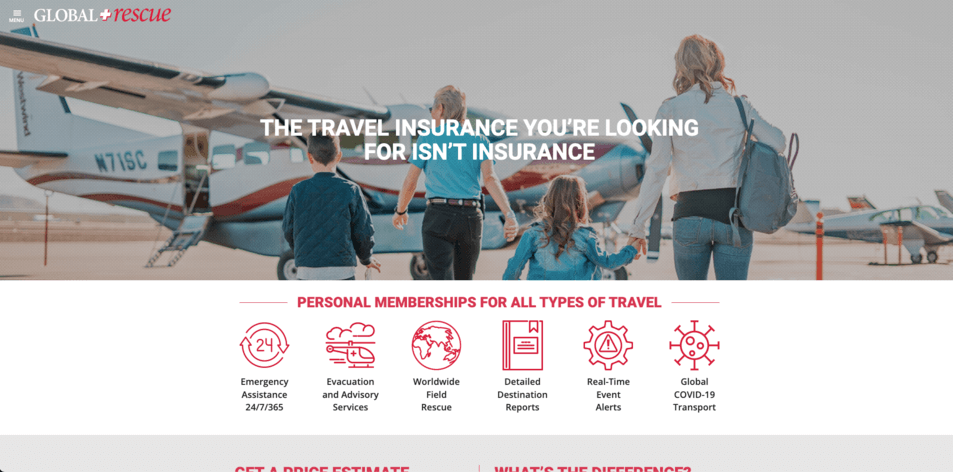
This is a landing page through and through, but it does have one problem that can negatively impact the conversion rate. Here is what Global Rescue’s page does right:
- The Unique Selling Points are explained clearly.
- The page itself is short but has enough information to convince visitors to get an estimate.
- The personal memberships section shows a variety of benefits.
However, the CTA is the elephant in the room. The “Get a Price Estimate” box does not stand out enough, especially if you consider the red “Visit Our Blog” CTA on the bottom of the page. Focusing on one CTA and making it more visible is a great start for the optimization process.
8. Insubuy
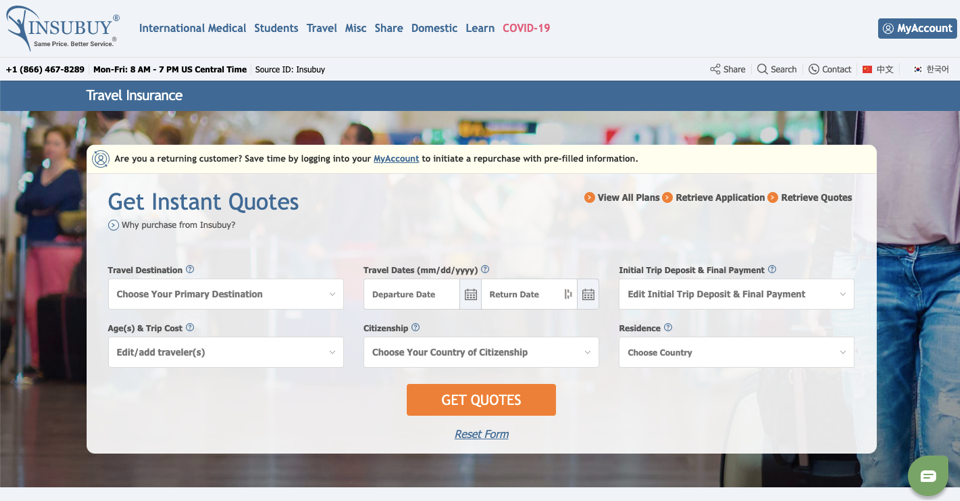
The landing page Insubuy uses in paid campaigns is a product page. While the insurance company does a lot to show a value proposition and help the visitors stay on the page and fill out a form, there are a few things to work on.
- The form has multiple fields and requires various personal information, which might not be comfortable for first-time visitors.
- The section called “What does travel insurance include?” has all of the main elements, but some of them have a link to another page.
- The “Insurance Guide” is a list of links for popular inquiries. It can be replaced with an FAQ section.
- Design-wise, it looks a bit dated. A nice, modern travel-focused template would do a much better job here.
9. Travelinsured
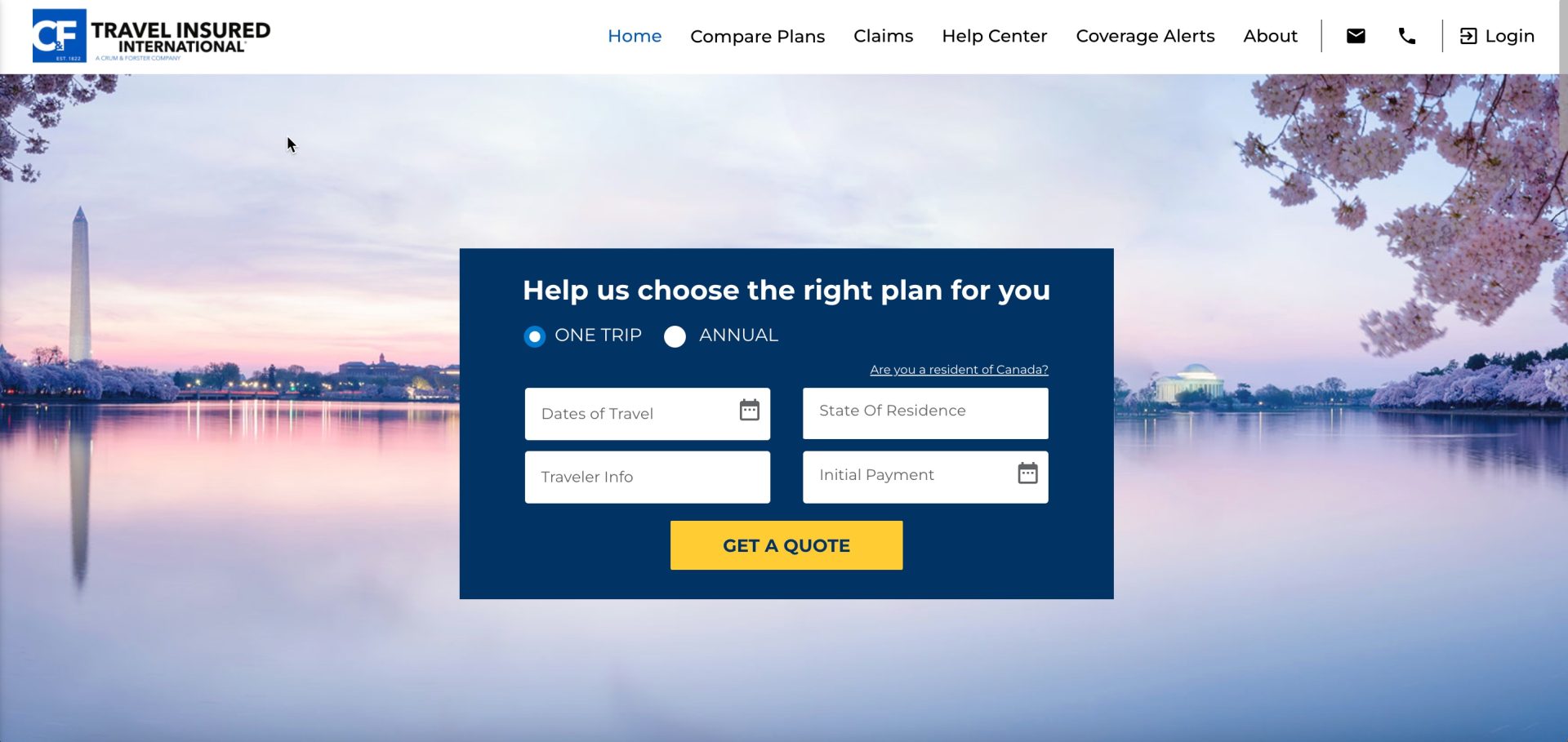
Travelinsured went for minimalism in the design along with structure simplicity, and indeed, in most cases, it does the job smoothly. What makes it work?
- A clever trick to replace copy with an outstanding background picture carrying a promise of dream travel.
- A form with a CTA button is centered to catch the eyes in a flash.
- The absence of distracting elements enables a clear focus on the target action.
Nevertheless, such an attitude has two weak spots:
- It may be hard to convince hesitant to this offer without a piece of copy underlying its strengths.
- Some fields in the form might be moved to the second step to avoid discouraging the impatient.
Life Insurance
10. Amplify
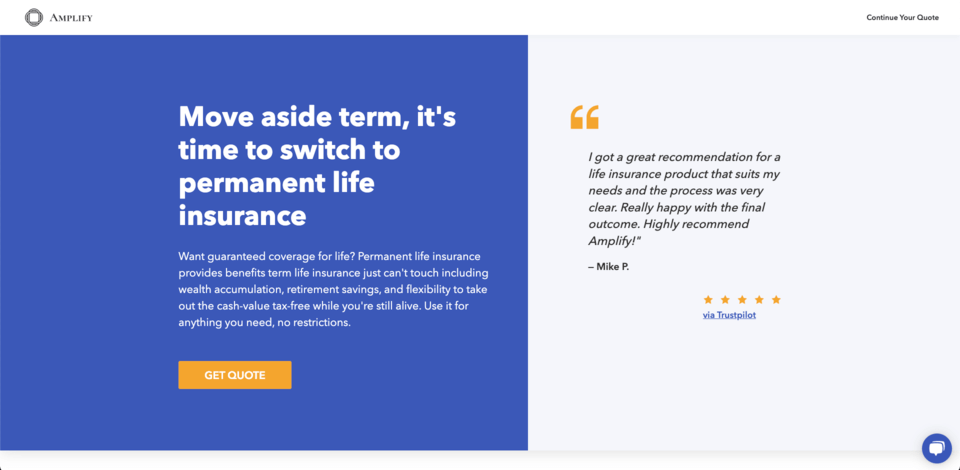
This is an excellent example of an insurance landing page that does more with less. Amplify’s page is short, but all the main elements are contained inside.
- The hero section has a persuasive copy.
- The testimonial is presented up top to make sure it’s visible quickly.
- Adding an animation of the process of getting a quote next to benefits saves space.
- The design is simple without being too dull.
Of course, no landing page is perfect. Here are some ways it could improve:
- Adding more testimonials would make a better impression.
- Linking to Trustpilot takes visitors away from the landing page, which poses a risk of them not coming back.
Other than that, this is a good example of a life insurance landing page.
11. Geico
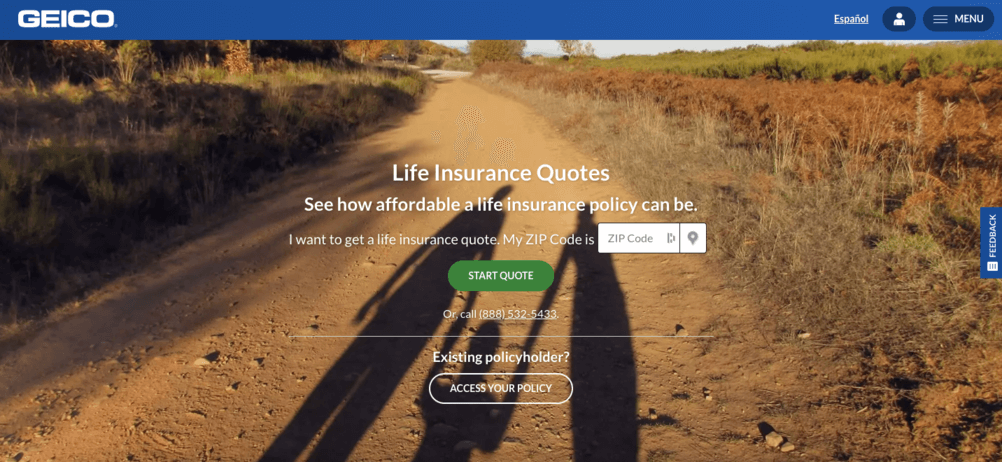
The insurance company with a gecko as its mascot has a landing page dedicated to its life insurance offers. Here are some things Geico did right:
- There is a CTA button and a short form in every section.
- Multiple parts of the landing page offer general tips without being too sales-oriented.
- The page layout is clear, making it easy to read and digest all the information.
As for the optimization, this caught my attention:
- External links might ruin visitors’ concentration.
- The FAQ boxes have one-sentence answers with links, so their potential is unfulfilled.
All in all, it’s more of a product page than a landing page, but with a few simple tweaks, the page can become more focused, making it easier to convert.
12. SoFI
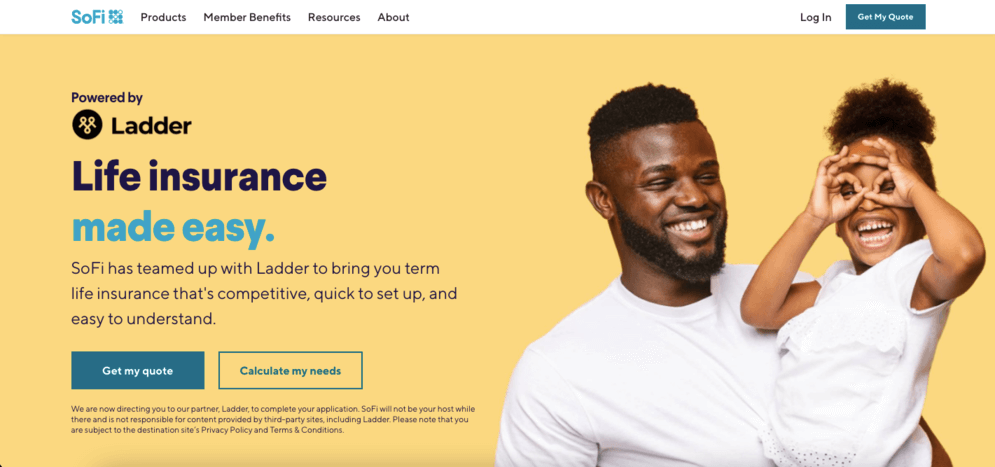
SoFI and Ladder use their landing page as a click-through page to take visitors through multiple conversion funnel steps. The page has a clear layout, with each section easily distinguishable thanks to different background colors. What else is there to know about this page?
- The use of the “Get my quote” CTA button is consistent across the page.
- It’s not adjusted to larger screens, but it works great on smaller-resolution devices.
- Showing the steps on the landing page is a solid choice.
- The main benefits are presented right below the hero section, so people will see them while scrolling through the page.
- One part of the page (the estate plan) speaks to a different target audience, so it might be a good idea to remove it.
13. Guardianlife
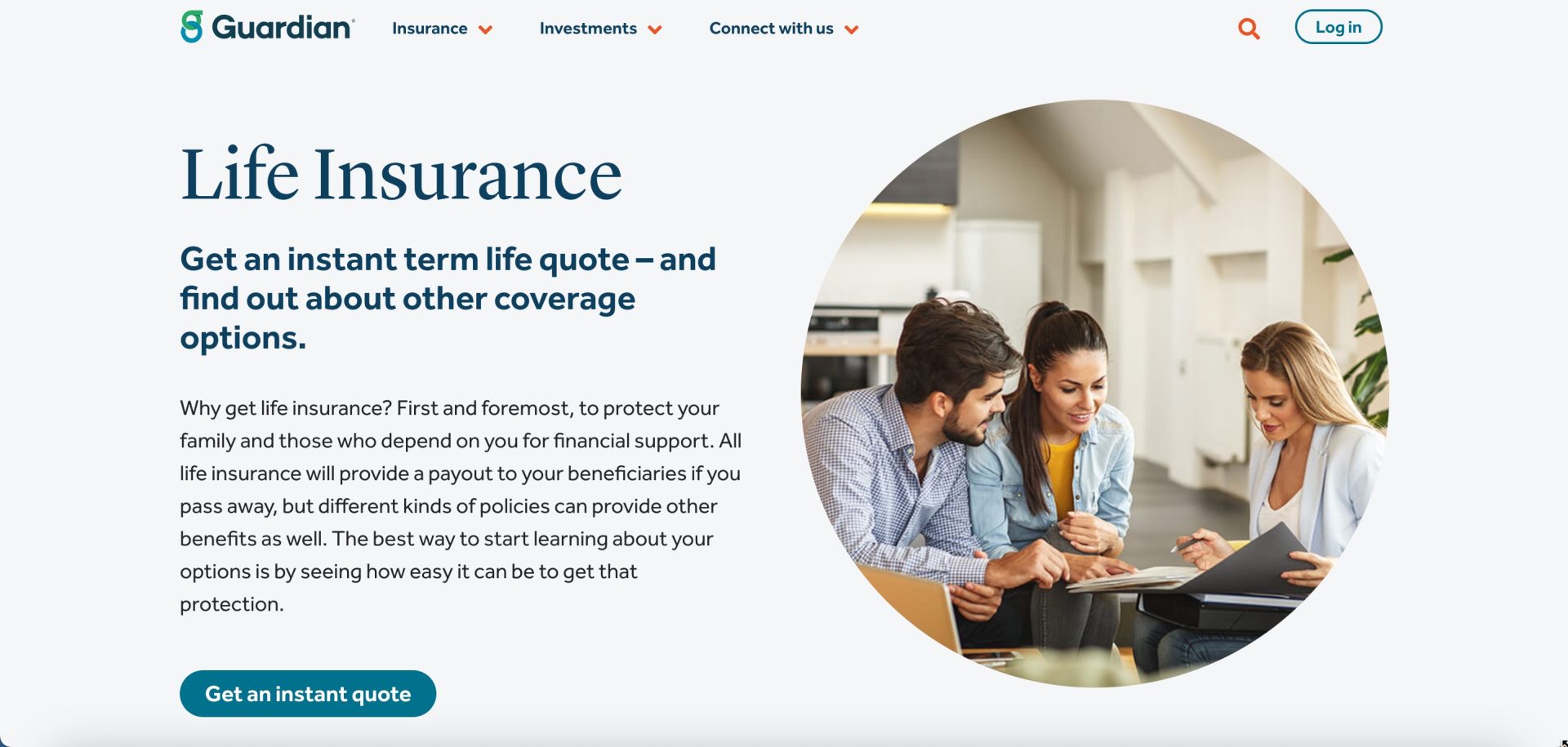
Guardianlife landing page is sparing with colors and easy-readable. What is worth noting:
- Dark and deep blue fonts standing out from the background look clear, inviting visitors to read through and be persuaded.
- Copy bearing well-explained “why’s” (Why does a customer need the product? Why should he choose this offer specifically?).
- Intuitive and thoughtful navigation with a primary CTA button in the hero section and the more complex form hidden below (as well as a more detailed offer presentation and FAQ).
- It looks like nothing here is redundant – every element plays its designated role.
While the first impression that comes to mind is “well done!”, this landing page may be too simple and found unattractive by visitors. It is important to the extent that some of them tend to transfer their ratings from one object to another. In this case: from the landing page to the product quality, what may cause they will jump ship to GL competitors…
Build Successful Landing Pages for Your Insurance Company with Landingi
If you’ve looked at the examples closely, you’ll know landing pages are the ones that have a more focused feeling compared to regular service pages. Instead of repeating the mistakes of others, you can get ahead of the competition and connect your ads to landing pages.
Thanks to the landing page builder made by Landingi, you have the freedom to design the perfect insurance landing page without any coding skills. Just pick a template, make the appropriate changes (like adding your own logo and copy), and click “publish”.
Not enough? If you’d like to go pro, build pages at scale with smart sections, generate SEO and copy with AI, A/B test and track events to ground your decisions deeply on data.
Along with the best practices listed in the post, you will be able to build high-converting landing pages and get more conversions than your competitors.





